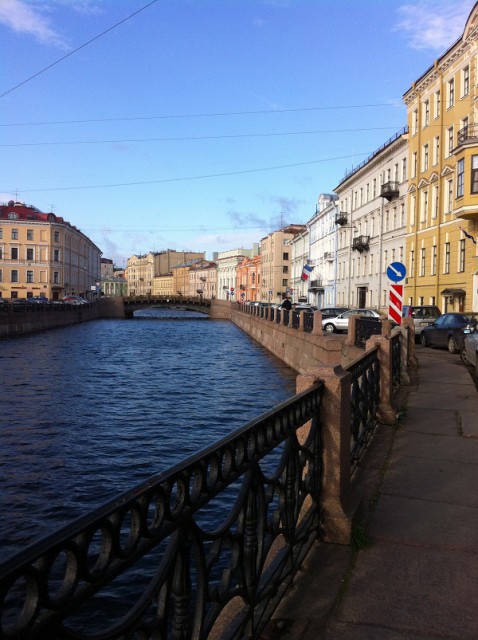If you’ve scoured the internet and tour guides about St. Petersburg, you’ve probably encountered the phrase, “Venice of the North.” St. Petersburg (aka Leningrad) stuns visitors with its beauty and confounds travelers with its maze of canals. If you’re expecting onion domes and izba style architecture, St. Petersburg is not the place. This is the city where architect Domenico Trezzini created his own style—Petrine Baroque. Even the Soviet regime could not erase the European grandeur of St. Petersburg/Leningrad. Under the Soviets aristocratic palaces became museums and cultural palaces. Now they have been restored to their former glory. The Hermitage is as awe inspiring today as it was to St. Petersburg residents in the mid 18th century. Almost all the sites on any standard tour predate the Soviet era. It’s not hard to imagine Peter the Great’s courtiers sailing on a canal and chattering away in French. Since the demise of the Soviet Union, St. Petersburg has been rehabbed into a cultural gem with grand hotels like the aptly named Grand Hotel Europa and the architectural gems polished to reflect their glorious past. As one leaves the center of the city, though, the blocky Soviet architecture comes hulking into view.
Peter the Great vanquished the Swedes and determined to build a modern city where a swamp once stood. His city which he called by the Dutch name, Sankt Pieter Burkh, turned its face towards the West. The city, founded in 1703, was built not to emulate Venice, but Amsterdam. Peter had traveled in disguise (a tall order considering he was 6’8” at a time when the average height was closer to 5’6”) to Europe to learn all things western. Amsterdam charmed him. The canals of St. Petersburg, like the canals of Amsterdam, criss-cross the city and delineate the neighborhoods.
When we began researching, I learned that natives of St. Petersburg tend to view their city as the cultural capital of Russia while they think of Moscow as a dreary backwater. They take pride in St. Petersburg’s European look. Even under Soviet rule, Leningraders had more access to the West through their contact with Finns and Soviet citizens of the Baltic region. Many Leningraders risked the label of “cosmopolitanism” to learn about the West and break through the imaginary iron curtain.
In August 1991 the world reverberated with the news that the USSR had died. A coup! Expectations were high. Now Russians could open themselves to the West and experience the freedoms they had been denied.
Twenty-four years after the fall of the Soviet Union, the new Russia has once again turned insular and its politics vilify opponents with the label of “foreign agents.” In Sunday’s New York Times (http://www.nytimes.com/2015/07/12/world/unlikely-targets-in-cross-hairs-as-russia-takes-aim-at-foreign-agents.html?_r=0), Andrew Roth profiled one of the most egregious examples of Putin’s anti-Western campaign designed to combat the sanctions leveled on Russia. Putin accused Dmitry Zimin’s foundation, the Dynasty Fund, of serving as a “foreign agent.” And what does this foundation do? It has been funding Russian scientists for the past thirteen years. Foreign academics also face increased scrutiny and perhaps dismissal from their posts.
While Leslie and I can recommend St. Petersburg’s many beautiful tourist sights to potential visitors, you may need rose colored glasses or opaque lenses to enjoy the political scene. We Americans may find Putin’s actions arbitrary, despotic, and counter-productive to the growth of his country, but the majority of Putin’s fellow Russians support his actions. Their backs are again turned inwards repudiating the West.
A footnote: The exodus from Russia continues on July 23, 2015 as the MacArthur Foundation, labeled "undesirable" by Putin's government, announces its departure from Russia. If General MacArthur were in charge of this foundation, he'd respond, "I shall return!"
